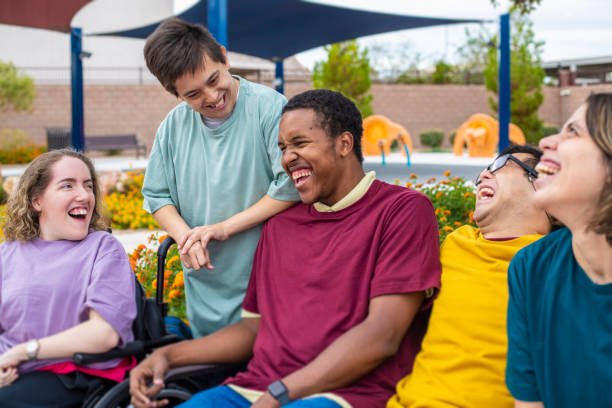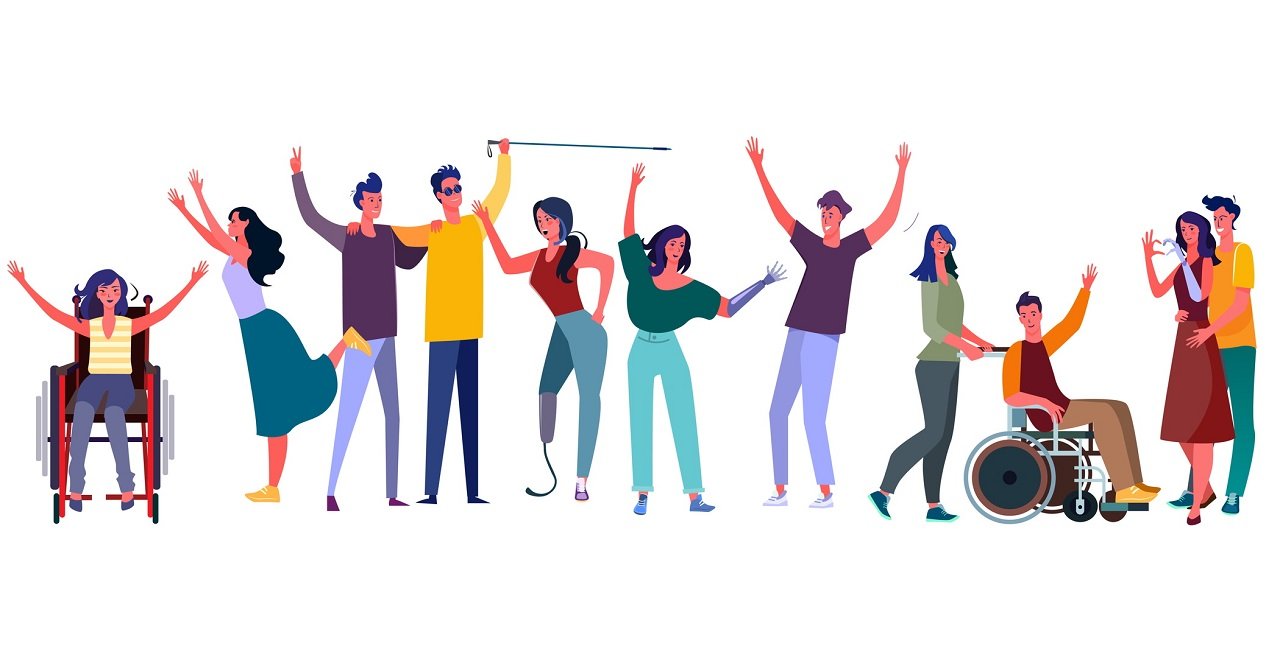 foot on the ball" width="3795" height="2529" />
foot on the ball" width="3795" height="2529" /> foot on the ball" width="3795" height="2529" />
foot on the ball" width="3795" height="2529" />
This resource includes up-to-date research on how pre-existing disabilities impact the diagnosis, treatment, and recovery from concussions. The information is relevant for individuals with a pre-existing disability, however, many sections have a focus on para-sport athletes and the blind or visually impaired community. We acknowledge that this page only begins to cover the topic, but we hope this resource is impactful for individuals with a pre-existing disability navigating a concussion.
Concussions are common but often deceptively complex injuries that pose unique challenges for individuals with a disability. According to the United States Census Bureau, close to 1 in 5 Americans live with a disability, and more than one billion people worldwide live with a disability. Epidemiologists estimate that, each year, 55.9 million concussions occur worldwide. Individuals with a pre-existing disability who sustain a concussion may struggle with inadequate testing and diagnosis, unusual symptoms, unique mental health challenges, and disability stigma in healthcare.

These areas may be potential barriers and require specific considerations for concussion patients with a pre-existing disability.
Disabilities with an increased likelihood for sustaining a concussion:
Individuals with the following disabilities may have an increased fall risk, or reduced ability to be aware of their surroundings. This poses the risk of running into other objects or people.


Below we’ve outlined a list of organized sports federations that are present for individuals with disabilities:
Paralympic Movement: Physical disability, blind/low vision, intellectual disability
Special Olympics: Intellectual & developmental disability
Deaflympics: Deaf or hard of hearing
Adaptive Sports: Any disability
Popular para-sports
Para-athletes are individuals with impairments who play sports that have either been adapted for their impairment group or created specifically for it. Most of the current research on concussion in sport has been done on able-bodied athletes; however, new studies are beginning to understand the increased risk faced by para-sport athletes, and by extension, all athletes with disabilities. A concussion, also called a mild traumatic brain injury, is caused by a blow, bump, or jolt to the head, neck, or body that transmits an impulsive force to stretch, compress, and twist the brain, which alters normal brain functioning. Learn more about what happens to your brain when you sustain a concussion on our page here .
Concussion education is a crucial component for the prevention, diagnosis, treatment, and understanding of concussion for individuals with a pre-existing disability. Concussions are serious injuries that have the potential to lead to persisting symptoms. Educating athletes, clinicians, and sports staff about proper guidelines for assessment and treatment that is specific to athletes with a pre-existing disability is essential. Athletes should not be told to “shake it off” or feel pressured to return to the game. Coaches and sports physicians should always err on the side of caution if a concussion is suspected in an athlete. In addition, creating sports rules, providing protective equipment, and adapting sports equipment can increase safety for athletes.
Find out more about how concussions can impact future health from our website.

The SCAT-5 is a commonly used concussion test that may be used with specific alterations for athletes with a pre-existing disability. As of June 2023, the SCAT-6 has replaced the SCAT-5. Clinical judgment should be used in conjunction with applicable tests and should pertain to the individual's disability. For example, blind or visually impaired individuals have higher scores of symptoms on these concussion tests when compared to those without a disability.
Concussion assessment differs for individuals depending on their disability. Baseline testing should be conducted pre-season due to the fact that commonly available baseline tests like the ImPACT test are developed for, and used in research with, able-bodied athletes. Having accurate baseline data before injuries occur ensures the test's accuracy. Every disabled athlete will have different baselines, with significantly higher variance than in the able-bodied population. The SCAT-6 tests for several baseline functions that are often impaired in people with disabilities; these commonly include cognitive, visual, balance, and movement testing. For blind and visually impaired athletes, tests that include eye-tracking may be omitted.
When assessing for cervical spine injuries , extra caution should be taken during examination for athletes with down syndrome, achondroplasia, and osteogenesis imperfecta. Vestibular testing may not be accurate or possible in people with the following disabilities: arthrogryposis, post-polio syndrome, muscular dystrophy, multiple sclerosis, and spina bifida.
A working group of researchers and para-athletes called the Concussion In Para-Sport Group (CIPSG) published the following considerations for para-athletes as part of their first position statement on concussion in para-sport in the British Journal of Sports Medicine. This may also be more broadly applied to disabled individuals.

Return-to-sport guidelines are an essential part of providing safe concussion care for athletes. Dr. Osman Ahmed is a sports physiotherapist based in the United Kingdom and is a founding member of the Concussion in Para Sport Group. Dr. Ahmed consulted as part of the creation process of this resource. Below are the steps that the Concussion in Para-Sport Group outline for addressing concussion in para-sport athletes (read about this research here ). Though this was formatted specifically for para-sport athletes, this outline may also be generally helpful for anyone with a disability who suffers from a concussion. Physicians must consider pre-existing disabilities and how they interact with concussion symptoms.
The online Concussion Awareness Training Tool (CATT) provides specific guidelines for blind/visually impaired athletes. This CATT training tool is the basis for our Return to Sport Guidelines Visual below.

Millie Knight is a British Paralympic skier who competes in all five alpine disciplines. Millie is one of the most decorated Paralympic skiers of the past decade, and is a four-time Paralympic medalist and two-time World Champion. When she was young, she lost most of her vision due to eye infections and now competes as a visually impaired para-sport athlete. She currently skis with the assistance of a guide, Brett Wild, who communicates through Bluetooth technology, giving updates on slope conditions. Throughout her career, Millie has suffered multiple concussions and injuries. She continues to suffer from persisting symptoms as a result of her concussions. This interview highlights her experiences with concussions as a para-sport athlete.
Interview with Paralympic Skier Millie Knight
Persisting symptoms are common after a concussion, especially for athletes with a pre-existing disability. Future studies need to examine if certain disabilities put individuals at an increased risk for persisting symptoms, or if certain disabilities may put individuals at risk for a longer recovery trajectory. According to the 6th Concussion in Sport Group Consensus Statement, if symptoms persist beyond 4 weeks, further treatment should be specific to an athlete’s individual symptoms. Navigating persisting symptoms for disabled athletes is particularly challenging; persisting concussion symptoms may be hard to decipher from pre-existing symptoms, certain therapeutic interventions may not be accessible to certain disabled athletes, and persisting symptoms may reduce everyday functioning. Early aerobic exercise that does not provoke symptoms by more than 1-2 points out of 10 has been shown to be helpful in concussion recovery after relative rest within the first two days of injury. Safely exercising in a calming environment specific to the athlete’s preference may be helpful for recovery. Persisting symptoms may impact concentration for athletes with visual impairment, thus making daily activities and the ability to rest and move more challenging.
Common persisting concussion symptoms include: headache, fatigue, cognitive symptoms, emotional dysregulation, sleep problems, neck pain, and dizziness.
Learn more about persisting symptoms on our page here.
Treatment options may include seeking support from: hospital-based outpatient rehabilitation centers, concussion clinics, mental health professionals, physical therapists, and vision therapists. Furthermore, certain therapies such as graduated exercise therapy, vestibular therapy, hormonal therapy, acupuncture, and others may be beneficial.
To find out more about these therapies, visit our concussion treatments page here.